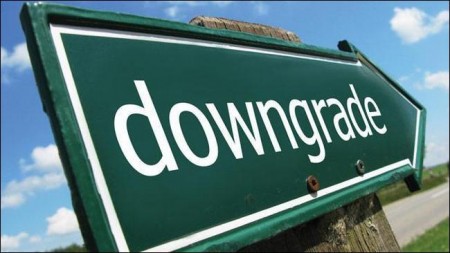Interest rates on cards are likely to be affected much differently than those on consumer loans.
Stocks have kept investors on edge during the past week as the Dow swings from boom to bust. For consumers, it’s a good time to step away from the market mayhem to survey the damage and potential threats to their finances.
One area that is getting short shrift — but shouldn’t — is the impact the Standard & Poor’s debt downgrade may have on credit card rates.
First, some background. The downgrade on U.S. Treasury bonds that was issued by ratings agency Standard & Poor’s — from AAA to AA+ — was widely viewed as a wake-up call to the U.S government and its “drunken sailor” approach to spending (though that might actually be an insult to drunken sailors).
While the Fed says it will keep rates near zero, many economists expect major consumer interest rate categories to eventually rise because of the downgrade, including things like mortgage, auto and student rate loans.
It’s no big secret why. Any consumer with a low credit rating knows that he or she is a bigger credit risk to lenders, and thus must pay higher interest rates for creditors to accept that risk and loan the consumer money.
It’s the same thing with Standard & Poor’s and the U.S. government. A lower credit rating means that global creditors face a higher risk of default when lending money to Uncle Sam. To borrow money — usually through the sale of U.S. Treasuries in the bond market — the U.S. government will have to offer higher rates of return to investors.
But here’s an interesting point. Even if Treasury yields do recover and grow again, your credit card’s interest rates may not follow the script. Why? Let’s look at three reasons:
Credit card rates aren’t tied to Treasury rates. Instead, credit card interest rates are tied to the Federal Reserve’s prime interest rate, which still remains historically low, and should continue along that path. Federal Reserve chairman Ben Bernanke has made it clear the Fed’s rate policy is to keep those rates down, despite what S&P says. That should help keep card rates manageable for consumers.
The CARD Act has a built-in safety net. Government can do something right once in a while. Take the credit card legislation passed in 2009: Inside the CARD Act is a provision that limits how much card issuers can raise rates. The reforms are limited to “current account balances,” meaning card companies can still raise rates on new charges, so be careful of new spending going into the last four-and-a-half months of 2011. But any charges you’ve already made are tied to current rates, which still remain relatively stable. A quick glance at BankingMyWay’s credit card rate search tool shows card interest rates stable between 11% and 20%, with the average credit card rate around 14%.
Standard & Poor’s doesn’t speak for everyone. Right now, S&P is out on its own with its debt downgrade. The other major U.S. credit agencies — Moody’s and Fitch ratings — didn’t go along. And until, or even if they ever do, don’t expect your credit card interest rates to rise significantly.
So call it a cloud with a silver lining. Yes, the stock market is taking a huge hit, but at least your credit card rate isn’t.
Views: 227



